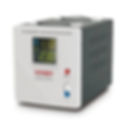Why We Recommend AVRs or Stabilizers
- SolarKobo
- Jul 20, 2020
- 2 min read
Updated: Jan 28, 2022
What is an AVR?
An Automatic Voltage Regulator more commonly known as Stabilizer is an electrical appliance that is designed to deliver a constant voltage to a load at its output terminals regardless of the changes in the input or incoming supply voltage. It protects the equipment or machine against over voltage, under voltage, and other voltage surges.
How Does an AVR Work?
Most stabilizers use high performance digital control circuits and solid state control circuitry that eliminates manual adjustments and allows the user to set voltage requirements through a keypad, with output start and stop facility. Modern advances in microchip technologies has led to improvements in high trip timing and responsiveness, typically less than a few milliseconds.

Why are AVRs highly recommended in Solar Systems Installations?
Well known to every Nigerian, stabilizers are a requirement for many electronic appliances that are sensitive to voltage fluctuations, for instance, air conditioners, television sets, medical equipment, computers, telecommunication equipment, etc.
For inverter-only systems, AVRs are considerations for users that use their systems on auto-mode or charge it with generating sets or depend on grid power from NEPA. It serves to help keep the input voltage at the required level. For instance, when grid power is available and is below 180V, the inverter will not internally bypass to allow charge and NEPA usage simultaneously. So as to make up for the discrepancy, the output supply will be from batteries both while NEPA is present and when it is absent. This increases the chances of the battery bank always been drained and/or overused.

The two options are to install an AVR or have the system operated manually until NEPA voltage is above 180V. But of course, since most users use their systems on auto-mode, installing an AVR to keep the voltage from NEPA or generating set at 180V is the better of the two choices.
The stabilizer when properly connected and working helps inverter-only power systems:
Detect the presence of mains and to differentiate between when mains is charging or not charging the batteries.
To cut off very low or high voltage that could damage the inverter.
There are also inverters that come with in-built AVRs in the form of microcontrollers. However, when being designed as part of a direct-use system, AVRs put a strain on budgets but they have proven to be a guarantee for optimum efficiency.
